The abit SG-95 is a mATX board which targets budget segments. It features SiS 622 and 966L chipsets. It has some nice features such as 16x PCIe support for latest graphic cards, HD audio, DDR2 667 support, and SATA RAID support. It can support most of Pentium 4 processors as well as the latest Core 2 Duo. Despite these features, the board does miss some more up to date technologies, such as Gigabit Lan, dual channel support, and SATA II. Well, the question remains, is this a good choice if you just want a board that works and maybe with the option to upgrade to the newer Core 2 Duo? Read our review and find out.
Introduction
The motherboard industry has been going through some changes in the past couple of years. There are new players that come into the retail market from the OEM maker, such as Foxconn, and some of the graphic card giants are also entering into the market, such as EVGA and BFG. In addition, there are also some big mergers, such as the merger of abit and USI. Abit, a very well-known motherboard maker, has been going through some rough time in the past year. Luckily it has turn around for abit with the merger with the USI and some restructuring of the company, abit has once again becoming a driving force in the tech industry and has once again produces some of the best motherboards in the industry.
The computer motherboard industry is a very fierce competition among who can make the most stable and best performing board. These high end motherboards have dominated the reviews around the web and satisfied the enthusiasts. However, not everyone needs a killer $200 motherboard. Some people just need a simple, stable, and decent function board that can get the job done. Today, we will take a look at a budget motherboard by abit–the SG-95 mATX motherboard.
Specification and Features
Let’s start by taking a look at the specification and features of the SG-95:
AT Glance:
- LGA 775
- SiS® 662
- FSB800
- DDR2 667
- PCI-E X16
- SATA 1.5G RAID
- IEEE1394
- 7.1 CH HD Audio
- RoHS Compliancy
Processor Supported
- Designed for Intel LGA775 processors with 800MHz FSB
- Support Pentium® D & Pentium® 4 & Celeron® & Celeron® D CPU
- Support 2006FMB Intel Conroe Processors
- Supports Intel® Hyper-Threading / EM64T / EIST Technology
- * Duo to SiS 662 chipset specification, SG-95 can only support CPU of FSB800MHz
Chipset
- SiS 662 NB / 966L SB
Memory
- 2 X 240-pin DIMM sockets support max.memory capacity 2GB
- Supports Signal Channel 64bit mode DDR2 667/533 Un-buffered Non-ECC memory
Graphics
- Integrated SIS Mirage™ 1 Graphics GPU high performance 256-bit 3D engine and 2D Accelerator
LAN
- On board 10/100 LAN
Audio
- On board 7.1 CH HD Audio by ALC883
The Chipsets: SiS 622 and 966L
The SG-95 is a mATX motherboard for Intel processors. To save some costs, the abit has opted out using chipsets from Intel or NVIDIA (the big players), and uses SiS’s 662 Northbridge and 966L Southbridge.
Courtesy of SiS.
Since SiS is not as big chipset player as NVIDIA or Intel, let’s talk a little about the SiS’s 662 chipset. The SiS 662 supports almost all socket 775 processor, ranging from Intel Pentium 4/Pentium D up to FSB 800MHz and the latest Core 2 Duo lines. It’s really nice to see a chipset to be able to support such wide range of processors. In addition to supporting these processors, the SiS 662 comes with a PCI Express x16 bridge, supports single channel 64 bit mode DDR2 667/533 Un-buffered Non-ECC memory, and comes with SiS’s own Mirage 1 integrated graphics. For more detail information about SiS’s 662, check out SiS’s own site (http://www.sis.com/products/sis662.htm).
Courtesy of SiS.
The fact that the SiS’s 662 Northbridge is able to support wide range of processors, up to the latest Core 2 Duo means that it will be a good board to buy if you got a cheap Pentium 4 CPU now and have the option to upgrade to Core 2 Duo when the price drops or budget lines of Core 2 Duo are on the market. Users who are looking to purchase this board do have to be sure that the processor’s FSB is 800MHz. Abit states on their website that the SiS Chipset only supports processor with FSB of 800MHz. I am a bit puzzled by this as abit has a list of processors which this board supports and it includes some CPU with FSB of 533MHz and the latest Core 2 Duo (which actually runs at FSB of 1066MHz). Do check abit’s website for compatibly processors.
What is a little bit disappointing about the SiS’s 662 chipset is support for the single channel DDR2 667/533 memories. All other current chipsets for Intel processors support dual-channel to offer double the memory bandwidth, but SiS’ 662 only supports single channel. The effect of single channel will definitely hurt the performance of programs that need frequent memory access. There is a benefit of not supporting dual channel memory, that is allowing users add mis-matched RAM to increase the amount of RAM.
The integrated Mirage 1 graphics is also a disappointment for SG-95. The Mirage 1 comes with only DirectX 7 support (that’s 1999 technology), which means that it won’t be Vista capable nor it is a good choice for even running any games, except maybe Solitaire. Luckily SG-95 comes with a 16x PCIe slot, so for those who are interested in upgrading to Vista or playing games, you have the option to upgrade. Despite unbearable support for the DirectX 7, the Mirage 1 actually has some nice features such as a MPEG I/II motion compensation decoder, and a High Definition Video (combined with PCIe port) to support TV-out & digital flat panels. Thus the integrated graphics is would be a nice choice for movie playback or use as the home entertainment PC.
Courtesy of SiS.
The Southbridge of the SG-95 is also based on SiS’s 966L chipset. The SiS 966L supports two PCI x1 Express 1.0a, one USB Host Controller, the Audio Controller with either AC’97 or HD Audio, two IDE controllers, and 4 SATA controllers. It also supports a 10/100 Base-T Ethernet. It has enough support for a simple system and a few extras connectors for some expansions. The 966L’s SATA controller only supports SATA 1.0 hard drives but it supports RAID 0, 1, JBOD . More information can be found at http://www.sis.com/products/sis966l.htm.
Closer Look at the Motherboard Layout
The board is quite simple. It’s expected since this is a budget board, but it does come with all the necessary connectors and ports. The abit Sg-95 uses a 24-pin power connector and an auxiliary 12V connector, which is placed near the top edge of the board, behind the rear panel I/O. The CPU socket is placed on the top center of the board with enough clearance in case you would like to install a big after market fan. The board comes with 2 DDR2 DIMM slot that’s on the on the right side of the CPU socket. The placement of the DIMM slots are fairly close to each other, it may pose some problem if you use one of the large RAM heat spreader, but given to the market segment at which the board is targeting, it probably won’t be much of an issue.
The board comes with 2 IDE connectors and 1 FDD connector located on the top edge of the board. In addition, two SATA-I connectors are located on the bottom edge of the board which are capable of running RAID 0/1.
The SG-95 has internal header for 2 USB 2.0, which are located on the bottom of the board, right next to the color coded front panel I/O headers. The front audio header is unfortunately located on the far end toward the bottom of the board, hence make it a bit far from the connector The board even comes with a 4 pin CD audio connector. Unfortunately, like the front audio header, the connector is also located on the far end bottom of the board near the expansion slots. Furthermore, the board comes with 3 fan connectors: 1 CPU fan and two system fan connectors.
The board comes with 1 PCIE x16, 1 PCIE 1x, two PCI expansion slots. It’s nice to see the board comes with enough slots for any future expansion and the fact that it comes with PCIe both x16 and 1x.
The rear panel I/O are as follows: 1 PS/2 keyboard, 1 PS/2 mouse, 1 COM port, 1 VGA port, 1 7.1 HD audio connector. 1 LAN 10/100 LAN, and 4 USB 2.0 ports. It’s quite unfortunate that the board only comes with 10/100 LAN rather than Gigabit. However, it’s nice to see HD audio being incorporated into the board.
The Northbridge is cooled by a passive heatsink while the Southbridge does not uses any cooling at all. This total passive cooling would make the SG-95 an ideal system for media center PC. Pairing the board with a Core 2 Duo CPU and a quiet after-market cooler and a decent graphic card, it would be a powerful yet quiet home media center PC.
I am glad to see that abit includes the jumper with a tab to allow easy removal. Motherboard manufactures have been trying to find a way to help ease the jumper installation and so far Asus’s Q-connector seems to be the best solution but abit’s jumper tab is a nice touch, especially considering that it is included in the budget board.

Not much accessories are included with the SG-95 but it’s expected from a budget board. In addition to the board, the SG-95 comes with 1 driver CD, two SATA cable with metal clasp to secure it to the connector, one IDE cable, 1 floppy cable, and the back panel face plate. The cables are not rounded, but it’s somewhat expected from a budget board so nothing to whine about. Also, a quick installation and a manual are included.
The BIOS
Here are some shots for the BIOS.
Some more options in the advanced menu. Here you can see the what option is offered for CPU and PC Health.
Not many thing can be tweaked with this board as you can see from the Northbridge (left) and Southbridge (right) options.
The onboard graphic can share with 32MB, 64MB, or 128MB of system’s memory (left). On the right, you see the APM configuration.
Installation and General Impression
The installation of the system is fairly simple with this motherboard because of its simplicity. The motherboard will automatically disable the onboard graphics if it detects a dedicated graphic card, however it won’t automatically switch from PCI to PCIe. You would have to manually adjust the PCI or PCIe under the BIOS as by default the setting is set at PCI. I didn’t do this when I first install the system. The system boots and runs fine and I was able to install Windows, but when I try to install the graphic driver, the system will hang. My Pentium 4 640 and the Kingston HyperX are being recognized properly without any trouble.
The driver installation is smooth with the CD provided. Abit does not include a floppy disk for the SATA driver, so be sure to have a floppy drive ready and make your own driver before installing the Windows. I only have to install two more drivers, the audio and LAN, after Windows installation and the system is up and running.
Testing System
The following systems were used for the test:
|
|
System 1
|
System 2
|
|
Motherboards
|
abit SG-95
BIOS M609AF11
|
Shuttle FB95 (SB95P v2)
BIOS FB95s20R
|
|
Processor
|
Intel Pentium 4 640
|
Intel Pentium 4 640
|
|
Heatsink and fan
|
Stock
|
SB95Pv2 stock
|
|
Memory
|
2×512 Kingston KHX4300D2/512
|
2×512 Kingston KHX4300D2/512
|
|
Graphic Cards
|
Sapphire X1600XT
Catalyst 6.11
|
Sapphire X1600XT
Catalyst 6.11
|
|
Hard drives
|
WD2500KS (SATA)
|
WD2500KS (SATA)
|
|
Sound Card
|
onboard
|
onboard
|
|
Power Supply
|
Zalman ZM460-APS
|
Shuttle SB95P PSU
|
|
DVD-ROM
|
NEC ND-2500A DVDRW
|
NEC ND-2500A DVDRW
|
|
Operating System
|
Windows XP Pro SP2
|
Windows XP Pro SP2
|
|
USB Device
|
SanDisk Cruz Micro 512MB
|
SanDisk Cruz Micro 512MB
|
Benchmark Tools:
-
PCMark06 v120, default setting
-
SiSoftware Sandra XI
-
Everest Ultimate Edition v. 3.50.761
-
3DMark06 v110, default setting
-
SuperPi Mod 1.5XS
-
HD Tach 3.0.1.0
Benchmarks: Processor Benchmarks
Let’s start by taking a look at the CPU performance tested in SiSoftware Sandra XI and Everest.
more is better
more is better
Both in the Sandra XI’s Processor Arithmetic and Processor Multi-Media benchmarks, we see that the abit SG-95 is a tad slower than the Intel 925XE Chipset found in the Shuttle’s FB95. The difference is not that great, merely 1%.
more is better
more is better
Everest’s CPU benchmarks and FPU benchmarks both show the similar results as found in the Sandra XI. We see that the abit SG-95 is performing slightly worse than the Shuttle’s FB95, generally within 1% except the Photoworxx benchmark. We see a whopping 40% performance gain of the Shuttle FB95 over the abit SG-95 in the Photoworxx benchmark. This could be attributed to the lack of dual channel support found in the abit’s motherboard. Thus, a program which requires frequent memory access, the abit SG-95’s single channel memory can be its Achilles Heel.
less is better
Finally, take a look at the Super Pi Mod’s benchmark. The scores are identical for both of the motherboards. Comparing to the raw processor speed.
Benchmarks: Memory Benchmarks
Let’s take a closer look at the effect of the memory bandwidth on the abit SG-95.
more is better
more is better
less is better
We already know that the abit SG-95 only supports single-channel memory. Hence it won’t be a surprise to find its performance to be worse in these benchmarks. The abit SG-95’s single channel really hurts its memory performance. The Shuttle FB95 performs on the average of 50~60% better due to its dual channel support. We also see that the abit SG-95’s memory latency is about 70% slower than the Shuttle FB95.
PCMark05 v120
Let’s take a look at the PCMark05’s score. PCMark05 is a tool developed by Futuremark to test the processor, memory, hard drive, and grahpic of the system. It is a good tool to get a sense of the overall system performance on day to day use.

more is better
Since PCMark05 is designed to test overal system performance of a typical computer user, we get a better sense of the single-channel memory effect of the SG-95. In here, we can see that the support for single channel memory hurts the abit SG-95 performance for about 10%.
Benchmarks: 3DMark06
The 3DMark is designed to test the system for gaming purpose. It tests primarily the processor and graphic cards.
more is better
I couldn’t even get the onboard Mirage 1 to run the 3DMark06 as it requires a graphic card that is DirectX 9 capable. Of course, anyone who wants to play any game would sure get a dedicated graphic card and use the PCIe 16x slot. In the 3DMarks06, we see that the abit SG-95 once again performs just a tad bit worse than the Shuttle FB95. We can see that the CPU performance difference is actually 2% between the abit SG-95 and Shuttle FB95. The SM2 and HDR is fairly consistant, they are less than 1% difference. Once again, given the same system configuration, the abit’s board performs just a tad slower than the Shuttle’s board.
Benchmarks: Data Transfer Benchmarks
Let’s take a look at the data transfer speed of the boards.
Random access: less is better; Driver Index: more is better
More is better
More is better
|
WD2500KS (SATA)
|
abit SG-95
|
Shuttle FB95
|
|
Random Access (ms)
|
13.8
|
13.4
|
|
CPU usage
|
3%
|
2%
|
|
|
|
|
|
SanDisk Cruz Micro 0.2 (usb)
|
abit SG-95
|
Shuttle FB95
|
|
Random Access (ms)
|
10.9
|
11.0
|
|
CPU usage
|
3 %
|
4 %
|
Finally, we see a benchmark at which the abit SG-95 outperforms the Shuttle FB95 (albeit a small victory:)). Despite the similar average read speed and slightly slower access time, the abit SG-95 (based on the SiS’s chipset) actually has a slightly higher burst speed compare to the Shuttle FB95 (which is based on the Intel’s 925XE chipset). However, we do see that the CPU usage of the SG-95 is a little more than Shuttle FB95, 3% vs 2% respectively. It is not all that big of the difference and could still be within the testing error.
Looking at the USB transfer speed, we once again see the higher burst speed with the abit SG-95. Furthermore, contrast to the CPU usage for hard drive data transfer, the CPU usage of the USB data transfer of the abit SG-95 is actually less than the Shuttle FB-95, 3% vs 4% respectively.
Conclusion
Overall, looking at the performance of the abit SG-95, you can see that this budget board offers decent performance. Granted, the Shuttle FB95, which is based on the Intel’s 925XE chipset is about two years old and yet it still performs better than the SiS’s chipsets found on the SG-95 and comes with better features, such as Gigabit Lan and dual channel memory support. However, what the Intel’s chipset lacks is the ability to support Intel Core 2 Duo, the latest processor, which abit SG-95 do.
The abit SG-95 is an odd board. It has some good features, such as HD audio, DDR2 667 support, and PCIe support. Yet it lacks some of more up to date features that is found in its direct competitor, Intel 945G chipset, which offers features such as Gigabit Lan, dual channel memory support, and SATA 2, which are clearly missing from the abit SG-95. It’s rather unfortunate that the board does not come with some of the more up to date features, however, it probably won’t be missed given to the board’s target segment. In addition, the price do reflect the fact of missing features, as the abit SG-95 is priced cheaper than the boards featuring Intel’s chipset.
Despite the lack of dual channel support and the lack of Gigabit Lan, the abit SG-95 is a fairly decent board for budget buyer who just need a board that can get the job done. The board is fairly easy to setup, has enough connectors/ports, and very stable. The included onboard video is almost too weak for any use, except movie playback and desktop use. To get a good gaming performance, user should pair this board with the Core 2 Duo and a decent graphic card, then this board can be a fairly decent gaming machine for a budget price.
The abit SG-95 receives a score of 7.5 (Good) for being a good budget board that offers a decent performance and good stability.
Pros:
+ Price
+ Wide range of processor support: namely Core 2 Duo
+ 7.1 HD audio
+ 16x PCIe for graphic card
+ RAID 0/1/JBOD
+ DDR2 667 support
Cons:
– Single channel support only
– No Gigabit Lan
– Poor integrated graphic
– No SATA II support
 Bjorn3D.com Bjorn3d.com – Satisfying Your Daily Tech Cravings Since 1996
Bjorn3D.com Bjorn3d.com – Satisfying Your Daily Tech Cravings Since 1996
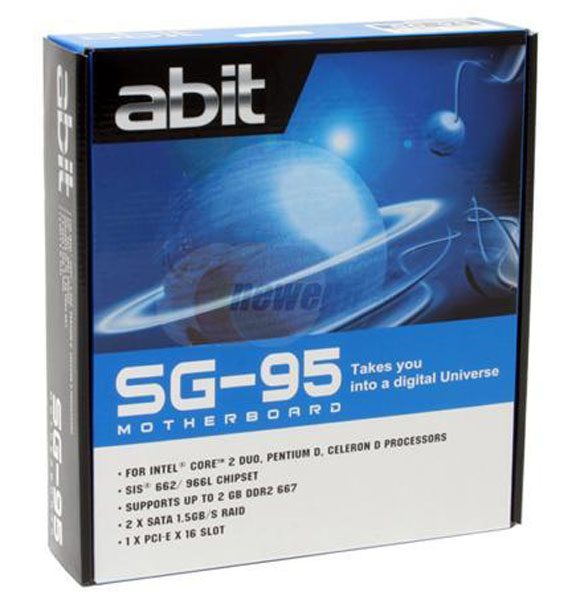







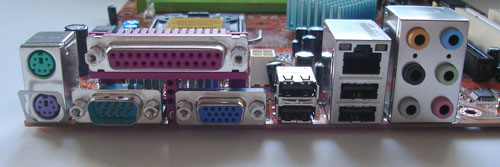



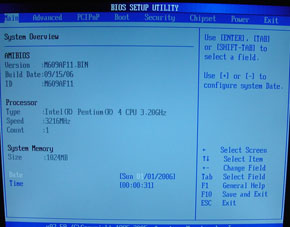
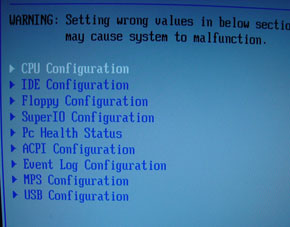

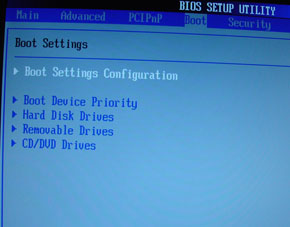
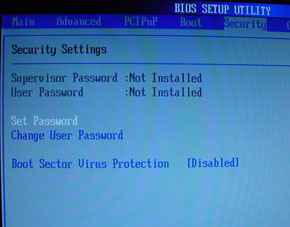
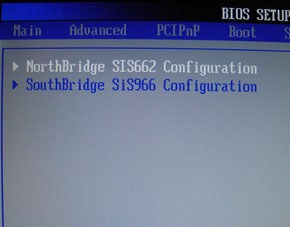
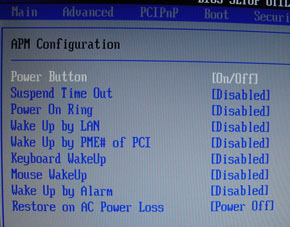
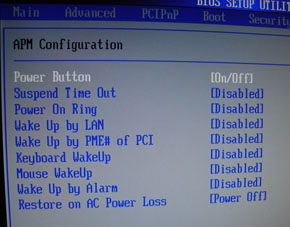






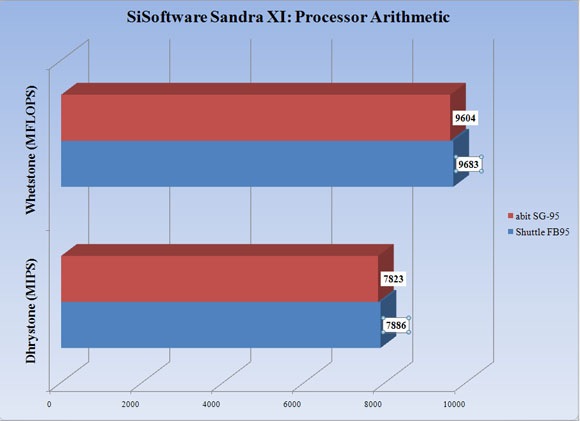
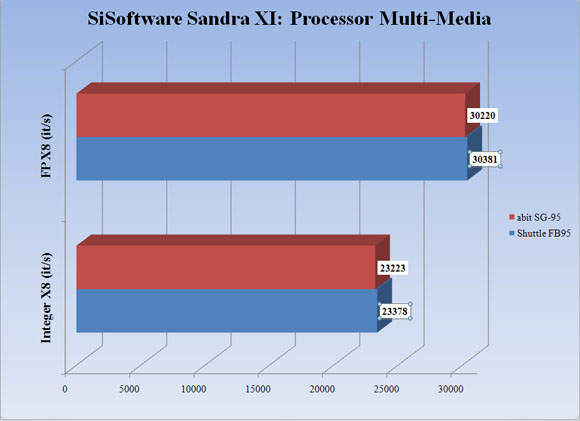


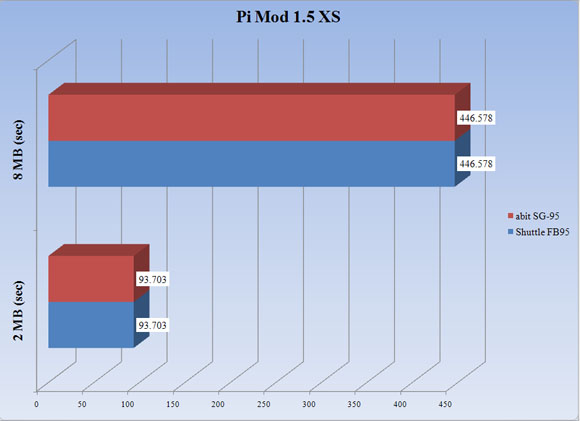
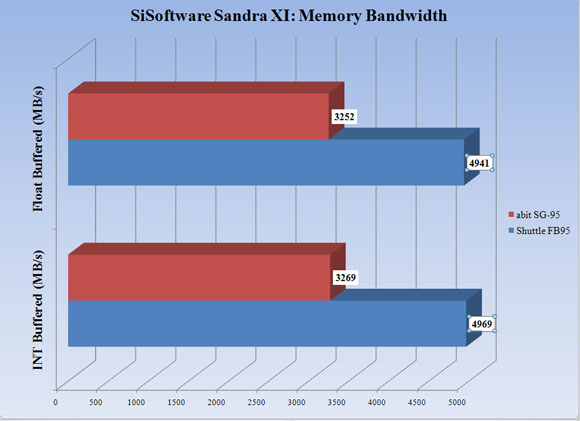
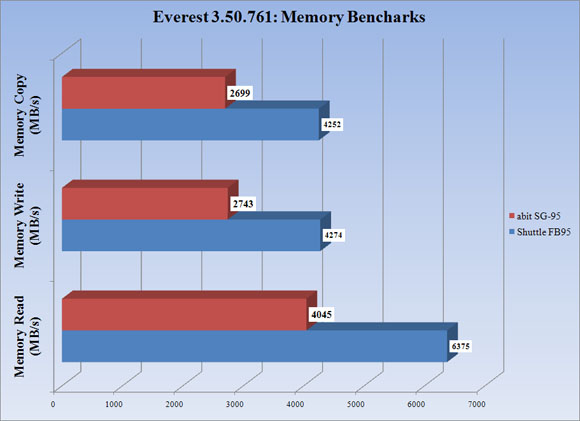
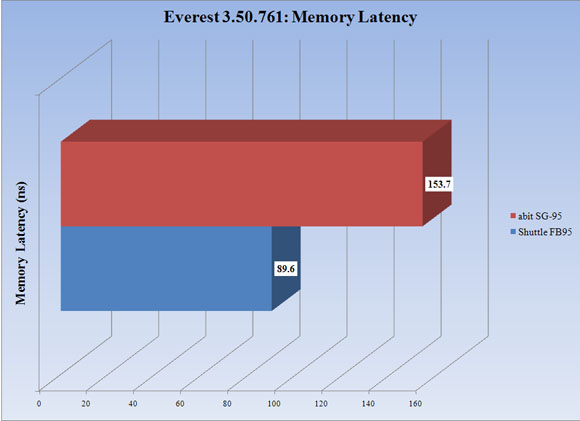


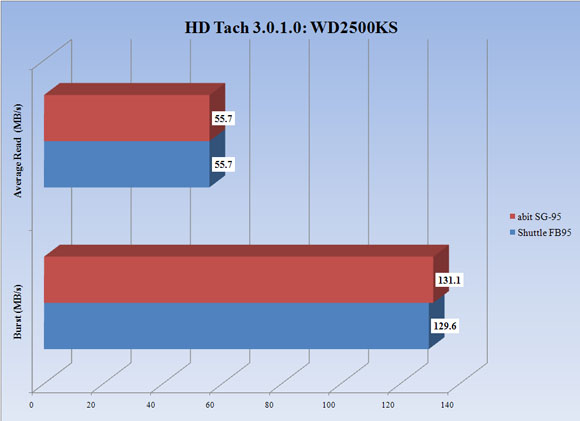
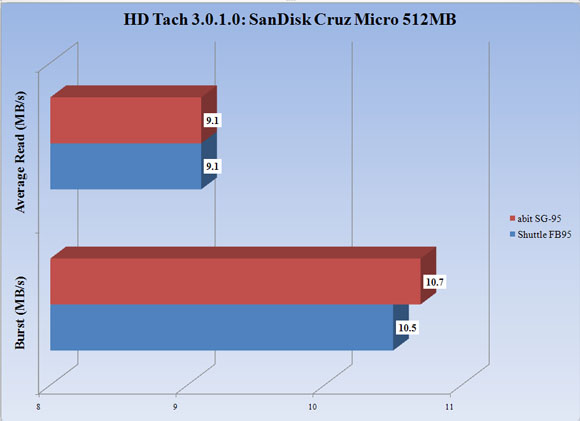




What would be the best graphics card for this motherboard?
Abit is no longer offering any support for the board because it’s such an older board (plus they are no longer in the business).
Since the board has PCIE x16 slot, I would say your best bet is stay within the gen 1 PCIE cards as it is hard to know if the board will support the gen 2 (and most likely won’t work with gen 3).